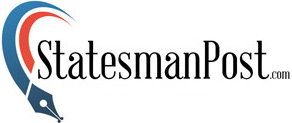
Iran refuses to admit it, but Donald Trump’s election as US president had an impact. They experienced a severe currency crisis amid fears of renewed US sanctions.Iran’s rial fell to a historic low against the US dollar. During his previous presidency, Trump imposed severe sanctions as part of a maximum-pressure campaign. At the time, Iran was experiencing a severe economic downturn, and protests were on the rise.
Historic Currency Low
After Donald Trump’s election victory, Iran’s national currency, the rial, fell to an all-time low against the US dollar, causing financial panic in Tehran. The rial fell to 703,000 against the US dollar in early trading before settling at 696,150. This unprecedented drop reflected growing concerns about the potential imposition of new economic sanctions by Trump’s administration, particularly in light of Iran’s ongoing conflict with Israel.
The reactions point to a volatile economic landscape for Iran, which has struggled under international sanctions linked to its nuclear program. The reinstatement of these sanctions in 2018, following President Trump’s withdrawal from the nuclear deal, put enormous pressure on Iran’s economy, causing further currency depreciation and economic hardship.
Stocks, bond yields and bitcoin surged as the U.S. election brought Republican gains and Donald Trump closed in on 270 electoral votes.
Iran's currency, the rial, fell to an all-time low, as its economy struggles under international sanctions. https://t.co/6vkp0ib46Q
— The Associated Press (@AP) November 6, 2024
Economic Strains and Recession
The sanctions contributed to an economic downturn in Iran, which resulted in a recession and widespread protests in November 2019. Iran’s GDP contracted significantly, with estimates indicating a 4.8% decline in 2018 and a further 9.5% contraction in 2019. Unemployment rose from 14.5% to 16.8%, exacerbating the country’s economic problems.
Oil exports, a critical revenue source, fell from 2.3 million barrels per day in early 2018 to just 260,000 by October 2019. This sharp reduction left the Iranian government facing severe financial constraints, as evidenced by the rial’s depreciation and inflation rates rising to 30.5% in 2018 and projected to reach 35.7% in 2019.
JUST IN 🚨
Iran’s currency has plunged to a record low in the wake of Donald Trump’s victory. pic.twitter.com/KrvaecgzW9
— Open Source Intel (@Osint613) November 6, 2024
Prospects Amidst Challenges
Despite these daunting challenges, Iran demonstrated economic resilience. The concept of a “resistance economy” emerged, with the goal of reducing Iran’s reliance on oil and boosting manufacturing operations by devaluing the currency.
However, the “look East” strategy was hampered by the fact that major Asian economies avoided formal trade with Iran due to US sanctions.
“The election of the U.S. president has nothing to do with us. The general policies of the U.S. and Iran are constant.” – Iran’s foreign ministry
Finally, Iran must strike a delicate balance between political aspirations and economic imperatives, as highlighted by the need for a nuclear deal to achieve long-term growth and economic stability.
Sources:
- Iran’s Currency Craters to Historic Low Following Trump’s Victory
- Iran’s currency falls to all-time low as Trump clinches to US presidency












